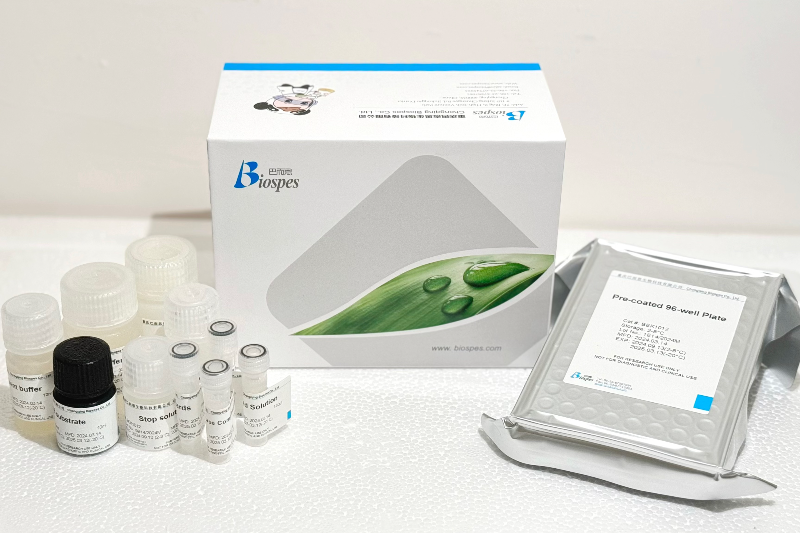Rat Kynurenine amino transferase, KAT ELISA Kit
Size: 96T
Range: 16 U/L - 256 U/L
Sensitivity: 1.6 U/L
Application: For quantitative detection of KAT in rat serum, plasma, tissue homogenate or cell culture supernatant.
--------------------------------------------------------------------------------------------------------------
Price: ---
Catalog No.: BZEK2347
Size: 96T
Range: 16 U/L - 256 U/L
Sensitivity: 1.6 U/L
Storage and Expiration: Store at 2-8℃ for 6 months.
Application: For quantitative detection of KAT in rat serum, plasma, tissue homogenate or cell culture supernatant.
Introduction
Kynurenine-oxoglutarate transaminase (EC 2.6.1.7), also known as kynurenine (KYN) aminotransferase (KAT), is a dimeric enzyme containing 2 covalently-bound pyridoxal-59-phosphates (PLP) as cofactor moieties and is the last enzyme in the kynurenic acid (KYNA) biosynthetic pathway. Kynurenic acid (KYNA) is biosynthesized as a product of the normal metabolism of the amino acid L-tryptophan and via a KYN intermediate; KYNA is synthesized via the transamination of KYN in the presence of KAT. KYNA is sequentially biosynthesized from LKYN via a 4-(2-aminophenyl)-2,4-dioxobutanoate (4AD) intermediate by KAT (Fig. S1). KAT transfers the amino group of KYN to a-ketoglutaric acid (2OG) via pyridoxamine phosphate (PMP), thus synthesizing L-glutamic acid (Glu).
Principle of the Assay
This kit was based on standard sandwich enzyme-linked immune-sorbent assay technology. The purified anti- KAT antibody was pre-coated onto 96-well plates. And the HRP conjugated anti- KAT antibody was used as detection antibodies. The standards, test samples and HRP conjugated detection antibody were added to the wells subsequently, mixed and incubated, then, unbound conjugates were washed away with wash buffer. TMB substrates (A & B) were used to visualize HRP enzymatic reaction. TMB was catalyzed by HRP to produce a blue color product that changed into yellow after adding acidic stop solution. The density of yellow is proportional to the KAT amount of sample captured in plate. Read the O.D. absorbance at 450nm in a microplate reader, and then the concentration of KAT can be calculated.
Kit components
1. One 96-well plate pre-coated with anti- rat KAT antibody
2. Standard: 0.5ml (512 U/L)
3. Standard diluent buffer: 1.5 ml
4. Wash buffer (30×): 20 ml. Dilution: 1:30
5. Sample diluent buffer: 6 ml
6. HRP conjugated anti- rat KAT antibody (RTU): 6ml
7. Stop solution: 6 ml
8. TMB substrate A: 6ml
9. TMB substrate B: 6ml
10. Plate sealer: 2
11. Hermetic bag: 1
Material Required But Not Provided
- 37℃ incubator
- Microplate reader (wavelength: 450nm)
- Precise pipette and disposable pipette tips
- Automated plate washer
- ELISA shaker
- 1.5ml of Eppendorf tubes
- Absorbent filter papers
- Plastic or glass container with volume of above 1L




